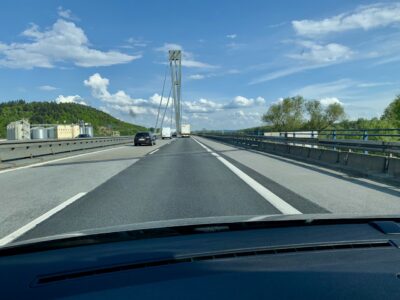On 27 February 2022, I travelled towards Finland, to the Saari residence in Hietamäki, leaving Vienna by car. My residency lasted from 3 March to 28 April 2022. Then, I drove back again, taking a slow path to Vienna via Sweden, Denmark, and Germany. In this blog, I write about my experiences.
All photos by Pia Palme, if not credited otherwise.
#Saari_Residence #[With]Saari #composition
#ecology #ecofeminism
#artistic_research #bass_recorder
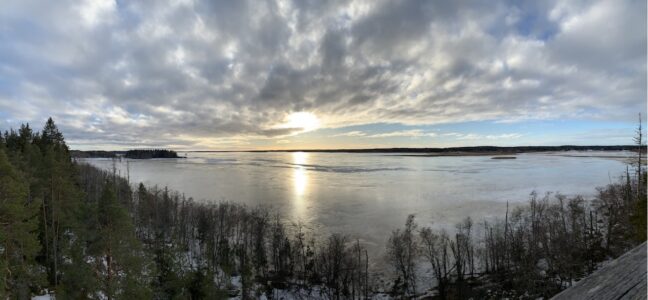
27 February to 2 March, 2022
Vienna to Stockholm
The journey from Vienna to Stockholm by car was an interesting experience; driving all by myself, I could feel the distance physically. It was an extraordinary time to travel: COVID restrictions were still in effect in most countries (with the exception of Sweden), and the end of February is off-season, no time for tourists, anyhow. Therefore, roads were almost empty, except for a few knots in the road system, mainly around Hamburg/Lübeck.
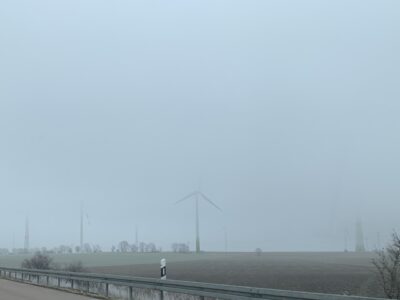
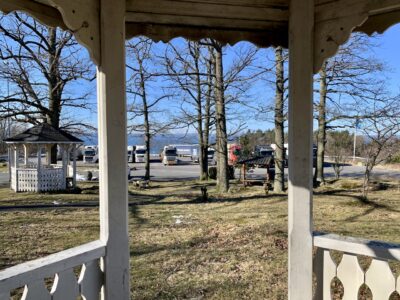
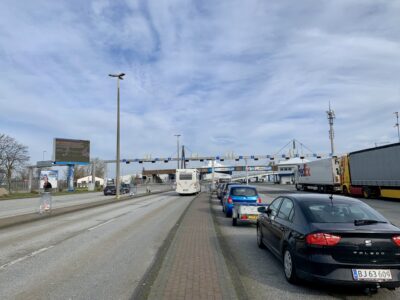
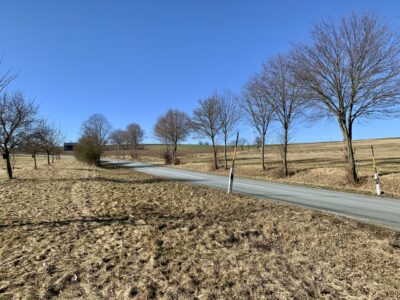
I perceived changes in weather and visibility, in the architecture and making of the roads, in the landscape, and in the vehicles that surrounded me—their colour, style and type, speed (!), the behaviour of the fellow-drivers… With the landscape, the form of the settlements and towns changed, and the shape of trees and fields. The shape of the church-towers became more ‘protestant’ as I came from Austria and Bavaria to Northern Germany. The low sun made it difficult to drive, around Lübeck, when I had to move in a Western direction for a longer time, in the late afternoon.
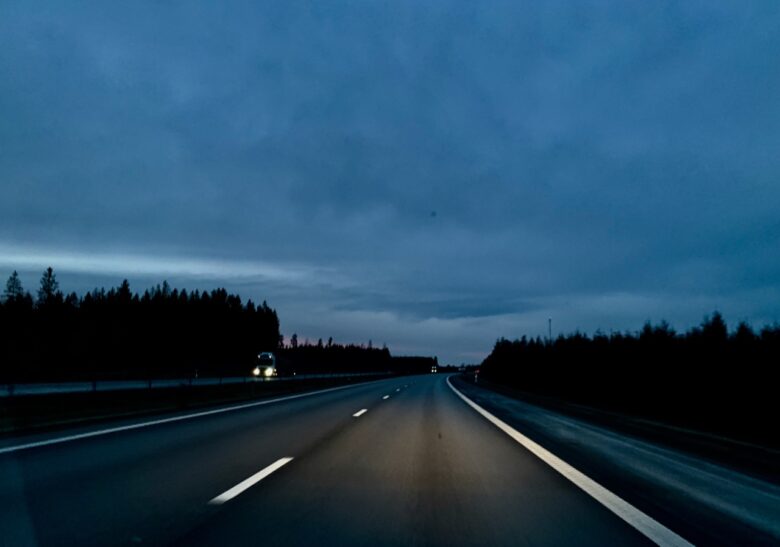
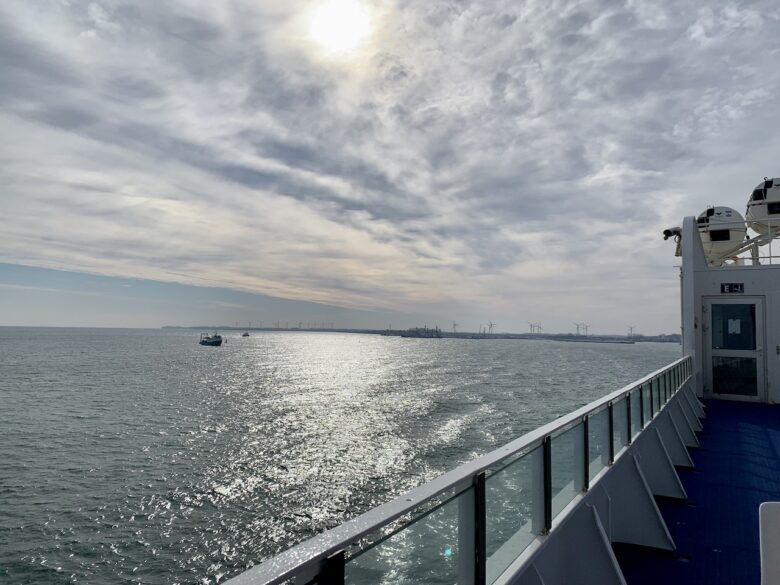
At that time, the transit roads in Europe were male territories, especially early in the mornings or late in the day. I shared the road spaces with international truck drivers, whom I met at service areas, restaurants, in the ferries, on parking places.
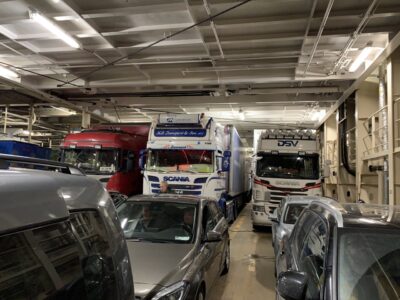
In a small Gasthof in Germany I was the only guest, and in a hotel in Lübeck I was the only person present at breakfast—with tables fully laid out for 70 people in the hall, all empty. Obviously, they practiced for the re-opening. An Indian restaurant in Lübeck served me as their only secret guest (they should only serve by takeout but made an exception). I felt really lonely. Except in Sweden: no masks at all, everything ‘normal’. That was irritating, too. It was the first time for me to eat in an indoor restaurant, with many strangers and without wearing masks, for two years.
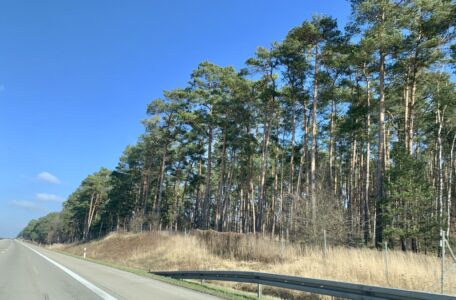
2 March 2022
Vreta, Sweden
Their Quiet Rooms, Bringing Peace
A composition for bass recorder came as a surprise on that day.
In perfectly sunny winter weather, I had started out from Jönköping and travelled along the highway, continuing towards Stockholm to catch the overnight ferry to Turku, Finland. I noticed a sign announcing archeological sites to the left—Götakanal and Vreta Kloster church—and decided to take a much needed afternoon break. I had some time to spend, and this promised to be a good stop. So, I met the medieval nunnery of Vreta, Sweden.
I turned off towards the village Berg on a hill, to look at the canal and museum; the idea of visiting a church didn’t really attract me, I would prefer a cafe and museum. I stopped at a parking place near a school and watched children at play, fascinated with their joyful movements on frozen ground. I couldn’t find the museum and—reluctantly—turned to the graveyard, aimlessly wandering between the stone slabs. It felt like too much to bear, too much suffering all around. I was on the verge of returning to my car to continue my journey.
Moving between trees and ancient pathways something catches my interest, I am magnetized, circle the building and find it open—inviting me to enter. Inside, I immediately feel at rest, like being peacefully at home. Oikos, the Greek word for home… the term ‘ecology’ comes to my mind, in it’s most bodily sense. By chance, I had stepped into one of the oldest (former) nunneries in Scandinavia, in operation from the 12th century onwards to the 17th, as I soon find out, and still used as a church these days.
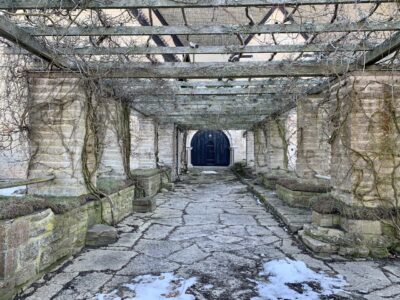
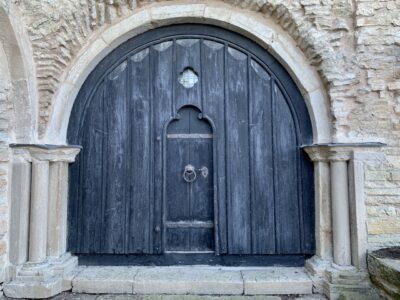
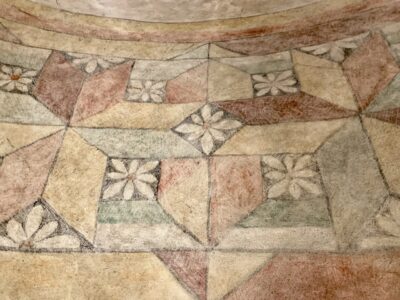
The church space is generously heated, it is warm and pleasant as a living room, and even well equipped with a splendid (warm) bathroom in the vestibule: a gift for any traveler like me. The floor plan is unique and appears as chaotic—or should I say: organic? A number of side-chambers and chapels extend from the main nave, like branches of a stone organism. Each one of them has a different shape and height; some are to be reached via sets of stairs that go up or down from the main floor. Every chamber has its own acoustic personality, together they form an interconnecting maze. In all directions, amazing vistas open up from, and through, doors and archways. These rooms must have been added during various periods in history. Virginia Woolf comes to mind: rooms of their own, peaceful and quiet spaces for humans who lived and worked here, under the guidance of the abbess. Who were they?


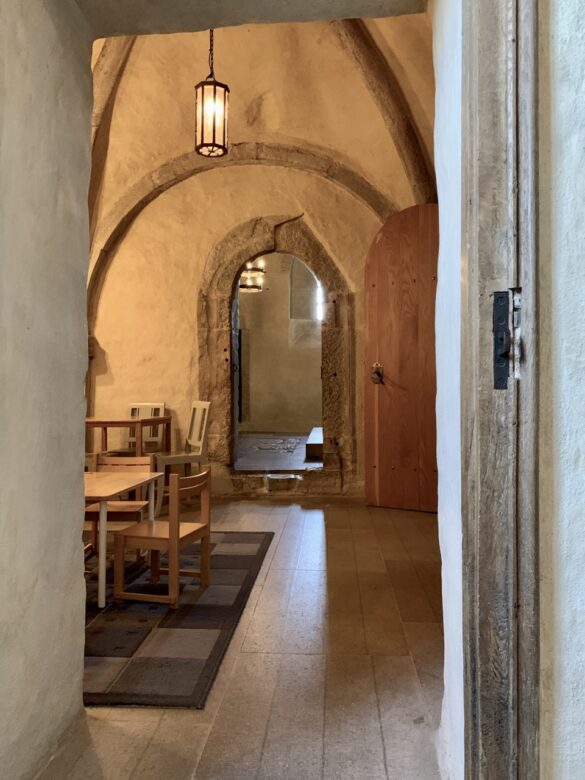

I wish for my instrument, I want to play—should I just get it? How to get consent? A man enters, obviously a guardian in charge of the space. I greet him, praise the building, introduce myself and ask whether I could perform in the church, just for myself. I was warmly invited: certainly, please, of course!
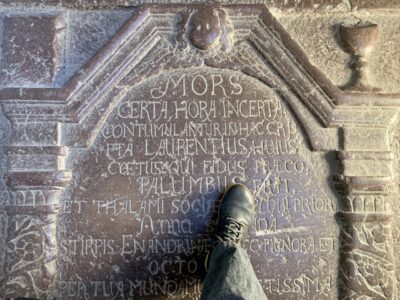
So, I return with my bass recorder and examine the acoustics in more detail. My favourite place is a small round chamber. Under the floor, an entire family is buried, several individuals of noble birth. The finely chiselled marble slab mentions the date 1139. Stone turned into lace… The dome is painted, with part of the ornamental yet flowery pattern still visible. The room appears to amplify the lower register of my bass recorder in a special way, in particular the pitch of the lowest F#—my favourite pitch, by the way. I play around that pitch, interacting with the space and carefully listening to the resonance, and end the piece with the F#.
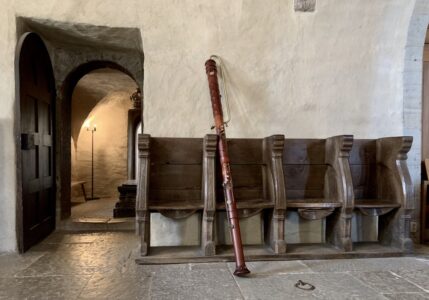
The recording was quickly and simply done with the iPhone. I performed other pieces in different positions in the church and even had an audience of visitors, later on. They express gratitude for the music, and I feel thankful for their presence as listeners.
I did not have much live audience, recently; my last concerts were cancelled, in Austria.
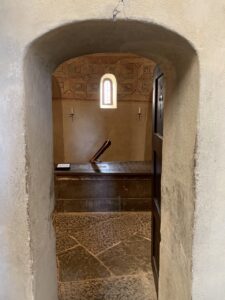
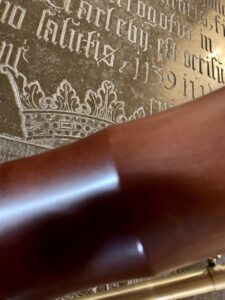
The music within the small burial chamber is my favourite. It is an example of a piece that emerges with space. It would not have appeared at all, without that specific space. This space has subjectivity, it is my collaborator. Space is a garment, a guise—and, at the same time, I am a jewel—or speck of dust— on that garment. Who wears the garment? I bear in mind the quiet atmosphere of the space, the stone, the materiality. Peace—a much needed freedom from disturbances and suffering, embraces me across centuries. I experience notion of being at home, in an ecological sense, as an artist and living being. That includes a connection to the past, to the women/nuns and to the buried remnants of human beings.
Neither did I ‘think’ of all that when performing, nor did I ‘fabricate’ a contemplative mood, or dream. It was enough to just be with the space in a bodily sense, as part of the situation, and to listen. I wish to share that feeling of peace with all beings.
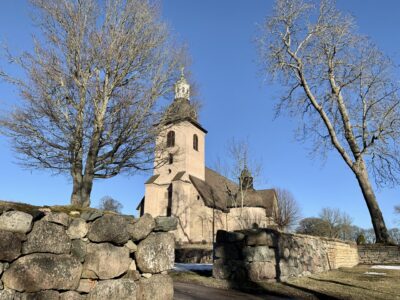
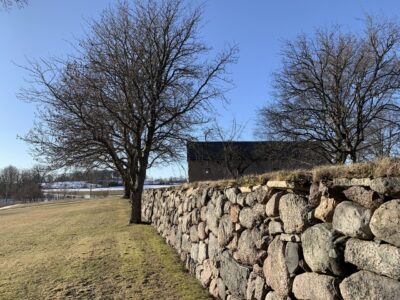
3 March 2022
Arrival at Turku, Finland
In the early morning, I enjoyed watching the ferry ploughing its way through the icy sea water. Strange sounds and crackles, and the water behaving like jelly, making no waves. Arriving at Turku.
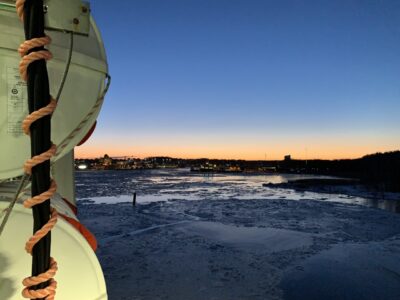
8 March 2022
Saari Residence, my home for the next two months
Here, I will work until the end of April. Snow and ice cover the ground, to be more precise: flat surfaces have turned into ice-fields like skate-rings. When I get out of my car in Turku to do some shopping, I can hardly move on the sidewalks. That includes all smaller roads; I can hardly drive there, Finnish drivers use spikes. It is good to put spikes on one’s shoes. I will wear these over the next weeks, until the ice is melted away.
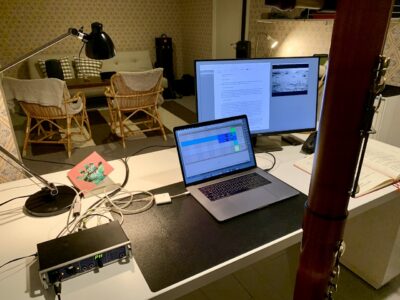
This is the view from my windows. I live in Lakajasiipi, a former Butler’s house next to the main building of the Residence. The wooden house is more than 100 years old. So much space just for myself, to work and live in! Delightful. These bloody sunsets are visible from my kitchen window, right now. Later, in April, the sun has already moved further towards West, and sets much later in the day.
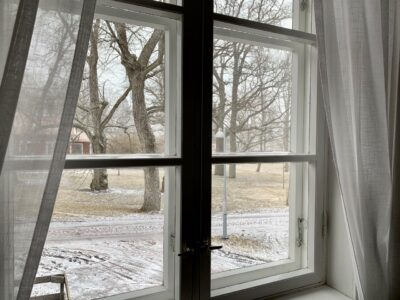
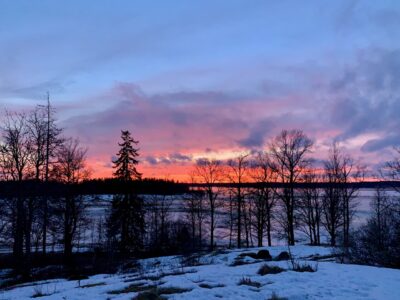
10 March 2022
Saari Residence, environment
The community of artists who are here with me is fantastic. We quickly form into a family of choice, Wahlverwandtschaften. From the first day on, the exchange is lively and deeply. The residence team is very supportive, professional and generous.
I take walks to familiarise myself with the surroundings.
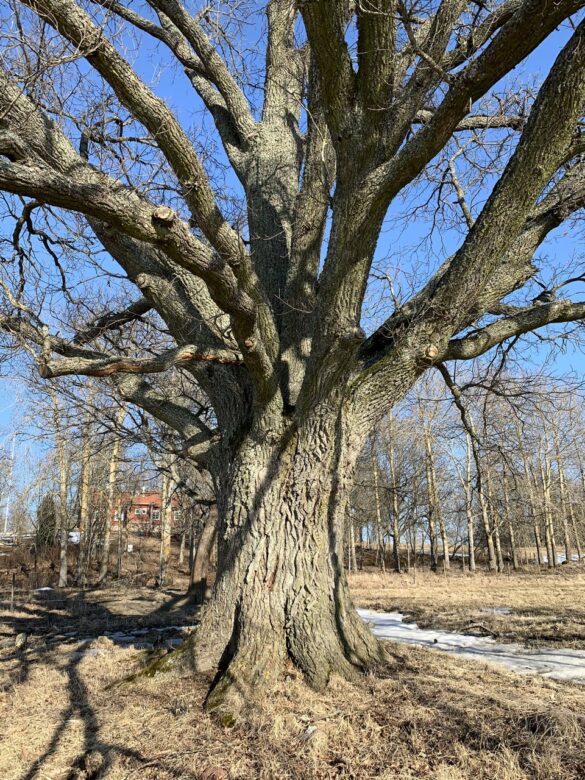
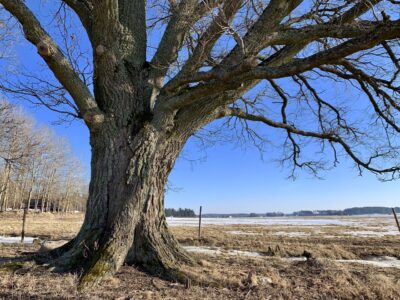
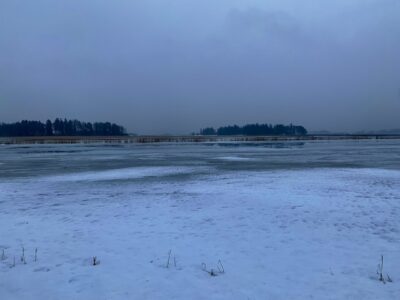
Quickly, I find some favourite places. The old oak next to the field and the path to the forest is one of them. A remarkable tree.
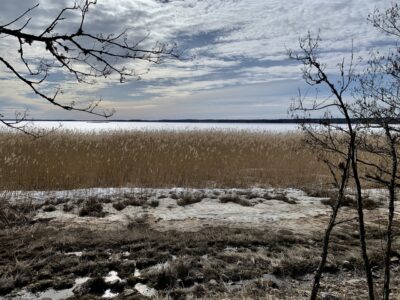
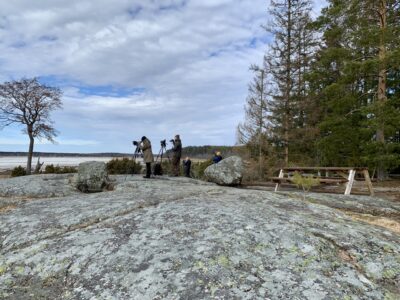
The beach at Silakkaari is another one, with its view across the shallow sea waters, always populated by various species of birds. The forests. I like the skies being alive with birds flying in all directions, single specimen, pairs, larger groups–permanently sounding out their cries and ongoing communications. Birds build strong flocks or communities, they have developed an elaborate culture of exchange, one can easily observe this. Finnish people love to watch birds; especially on weekends, they come in large numbers (the people) with good equipment, to watch birds for hours.
20 March 2022
Saari Residence
Saari is a unique natural sanctuary.
Apart from the many birds, which attract bird-watchers in great numbers, there is a large group of adders and sand vipers who spend the winter in hibernation in a small patch of wood and sub-shrubs right below my house. From the second week of my stay, I could observe them leaving their nests. Over the next weeks, I was able to follow their process of waking up, bathing in the sun, exploring the near surroundings, shedding their skins, mating, and finally moving out into the fields, where they will spend the rest of the year. This is exceptional – although I have observed adders (Kreuzottern) in Austria before, I have never seen so many adders as a group, in one place. The Saari group comprises dozens–I think this is a singular occurrence, which may be connected with the fact that Saari is surrounded by extensive wetlands, which are kept in their natural state and not drained for agricultural use. Geologically, the small hill had been an island until 1000 years ago (Saari means island in Finnish).
Especially, I find the long-time observation fascinating. Every day, I went out to watch them. Over -the weeks, I could identify several individual specimens, who had their own resting places on the small bank near a hiking path, close to the old oak tree. Their social interactions where very interesting to watch: their communication, greeting, dancing around each other, their tenderness in forming close bundles to warm each other.
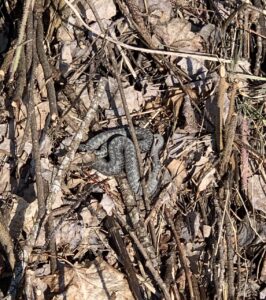
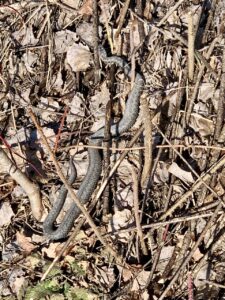
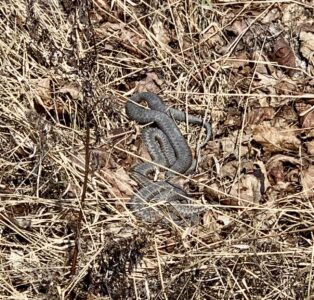
On specific days, later on, they were joined by another snake species, sand vipers, and even formed bundles together with them. I took numerous pictures and also made videos. Some of them turned into the visual part of the piece ON A FORMER ISLAND premiered at the Sibelius museum Turku. I also had gathered shedded adder skins which I used as sound objects in the performance.

3 April 2022
The small local shop on the crossing of our village road with the main road to Turku serves coffee and pastries. My Kaurismäki moment.
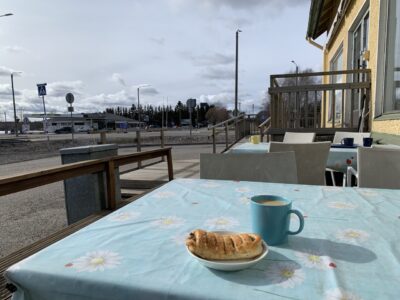
12 April 2022
Visiting Hyytiälä SMEAR II forest research station
For two days, we (the group of Saari Fellows) visit Hyytiälä Forestry Station, which is managed within the framework of Helsinki University. We visit their facilities, listen to talks and go on excursions through the forest and over frozen wetlands. We look at experimentation setups in the woods and get an overview of their on-site research. Professor Timo Vesala guided us through hip-high snow, and also in the sauna; I very much liked our discussions about forestry, ecology, climate observation and the history of the place. Indeed, he published on sauna, too. Art and artistic research is also present at the station.
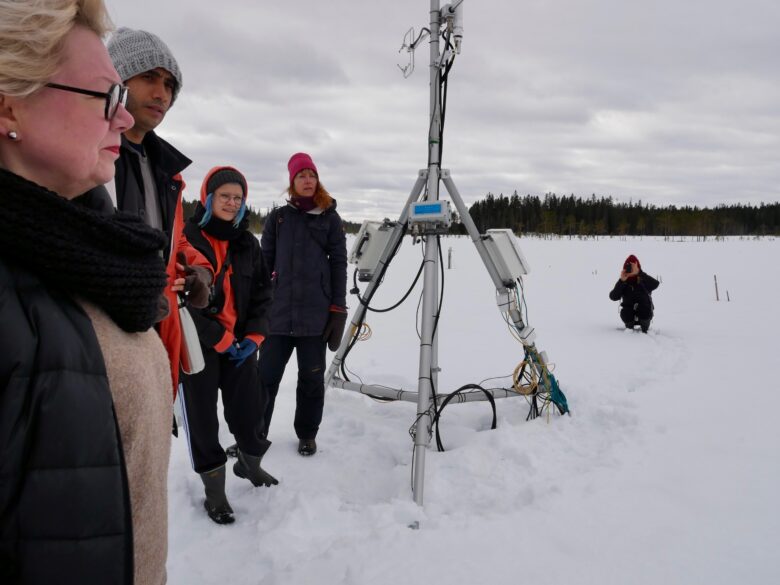
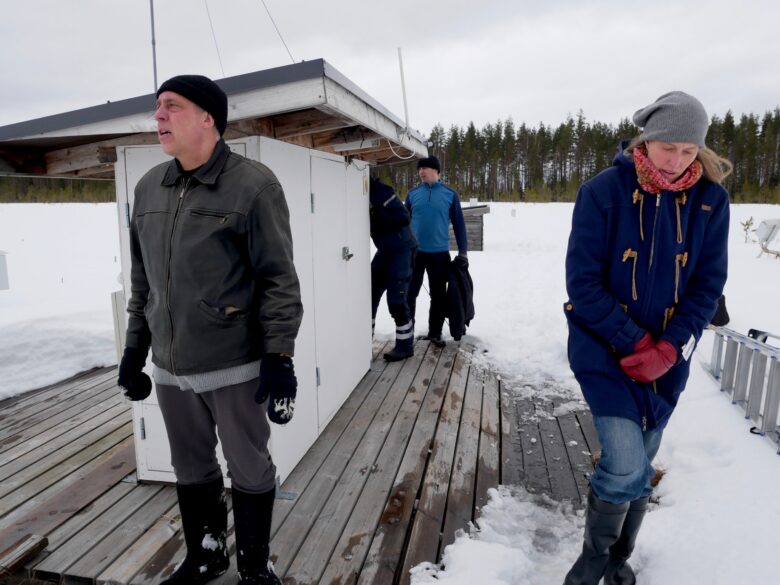




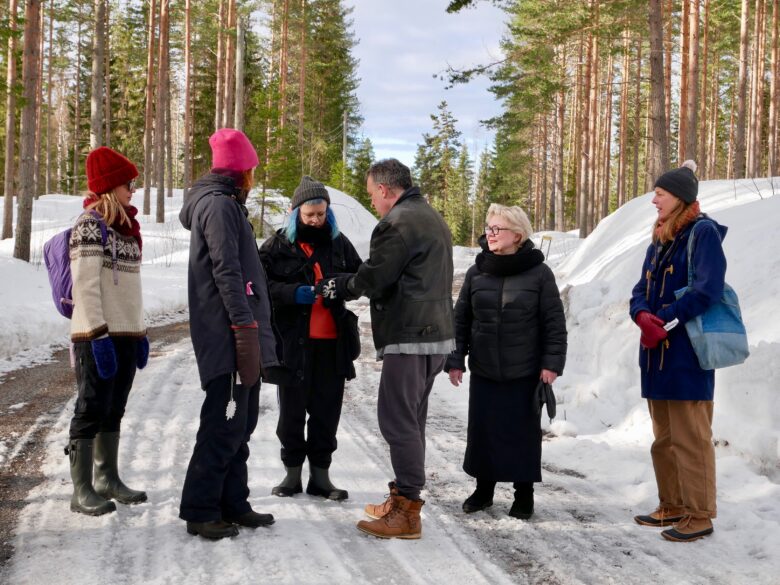

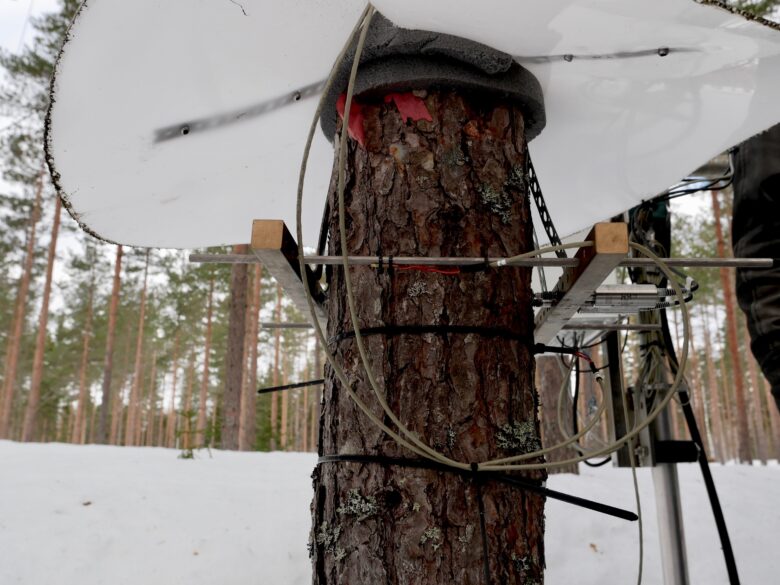

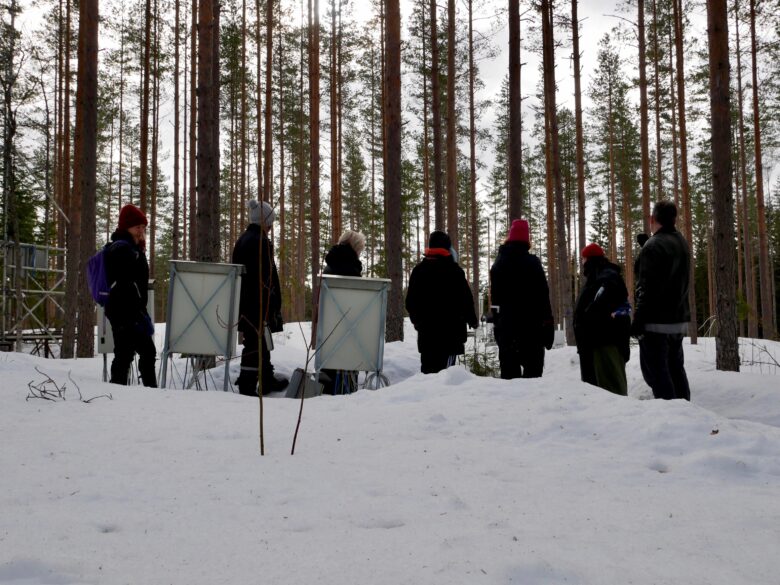





We also enjoyed community events at the grill hut and the magnificent old sauna with its huge stove and the ice-hole in the lake to cool off.
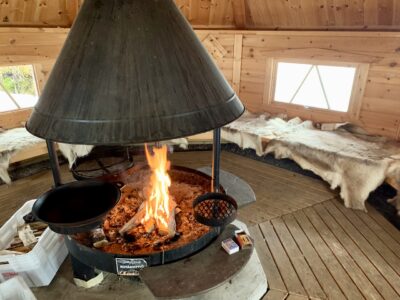
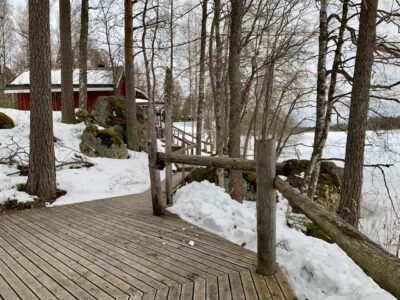
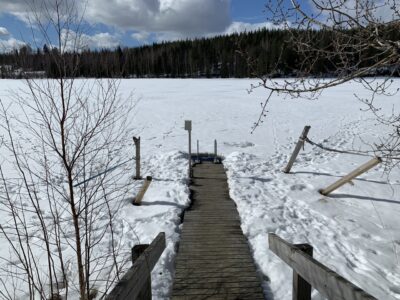
15 April 2022
Group pictures
Right in the beginning, Jussi Virkkumaa took this picture of our group.
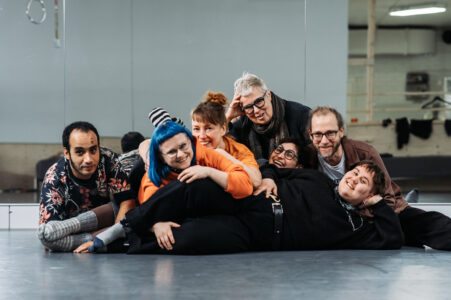
Later on, around Easter in April, these pictures were taken by myself and others, of Mari’s family and some of us, under the trees in front of our house.

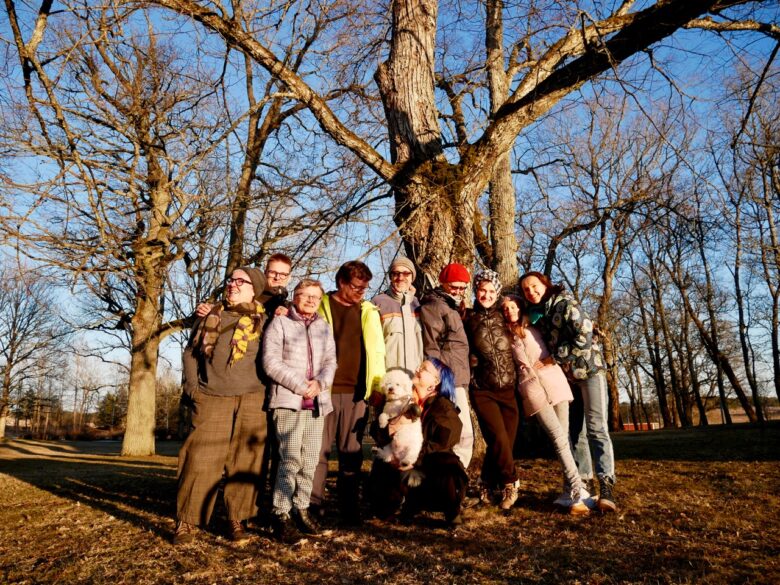

Cooking borscht together in the community kitchen…
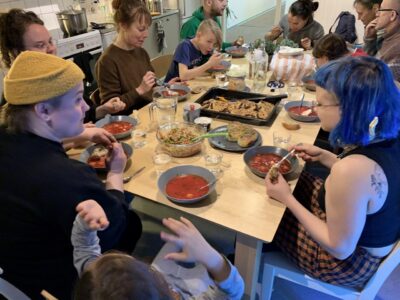
…and Satu dancing in the kitchen window
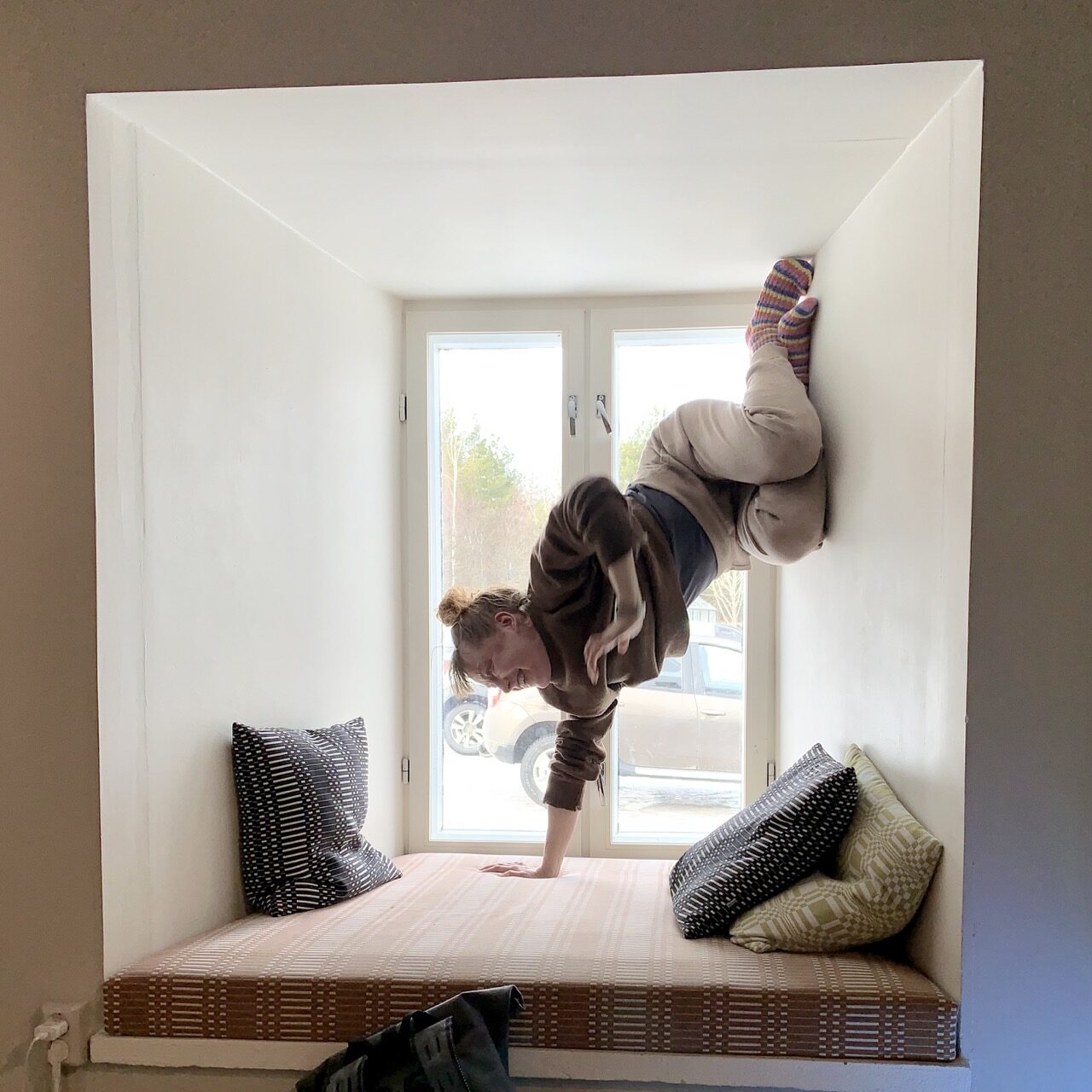
16 April 2022
Working and researching
I worked every day, and really enjoyed my workplace and desk—and the possibility to go outside and move in natural surroundings, observing my environment, and return to my desk. And, most of all, the community of fellow artists: they were such a supportive community; the discourse and exchange meant much to me, to all of us. I quickly settled into a rhythm of working, talking, practising, hiking and exploring. Progress becomes steady, that way. I also made a number of field recordings, with ‘normal’ microphones and underwater mics and many videos. Some of the material went into the visuals for ON A FORMER ISLAND.



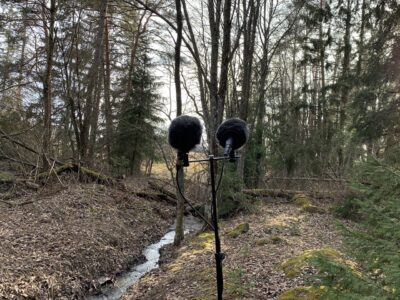
26 April 2022
ON A FORMER ISLAND
a theatrical ecology
This is a collectively realised performance which I initiated in March, after a visit to the Sibelius museum Turku. The place is a magnificent example of 1960’s concrete architecture, and their concert hall has very good acoustic qualities. I immediately felt attracted to the space, and asked whether it would be possible to realise a performance there. The answer came quickly and was invitingly positive. Therefore, I began to think about what to do there. My first plan was for a solo performance, but quickly I began to expand my idea, integrating and inviting the Saari group—as much as they wanted. I felt uncertain about how to do that—also, would the curators of Sibelius approve of that change in program? But I just stepped ahead anyhow.
A core trio emerged, consisting of the shibari performers Elie Halonen and Satu Hakamäki and myself. We began experimenting together and found our collaboration very successful.
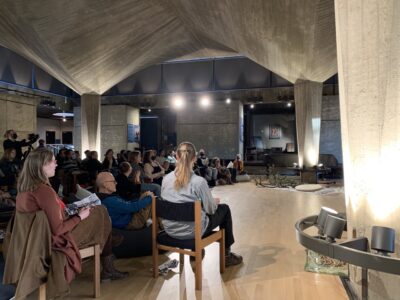
The group was then further extended to include Siiri Viljakka, Tuomas Laitinen—and, shortly before the performance, we integrated Mari Zhiginas, a jazz singer from the Ukraine. She arrived late in March, as a Saari artist taking refuge with her family; she will live and work at Saari for the next months. This picture was taken by Tuomas Laitinen during a rehearsal at the Saari studio.
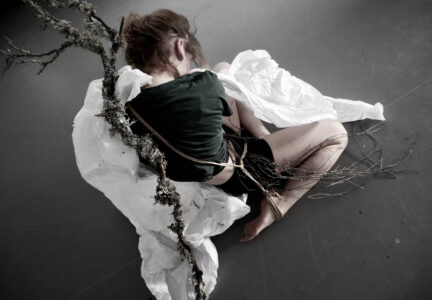
This was the official invitation at the museum website, which also shows information about the piece and the performers:
https://sibeliusmuseum.fi/en/events/on-a-former-island/
For more about the piece go to >>>
26 April 2022
Observing nature
The change of seasons during the time I spent at Saari was fascinating to watch and participate in. From Winter to spring, with days becoming longer so quickly that I found it difficult to adapt. Snow and ice held us in their grip until mid April; only in the last 10 days, the weather got significantly warmer.
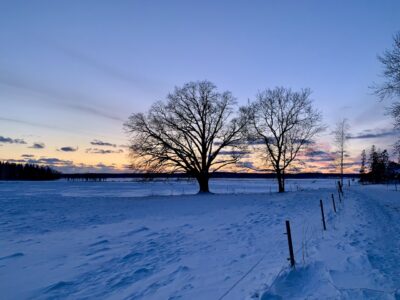
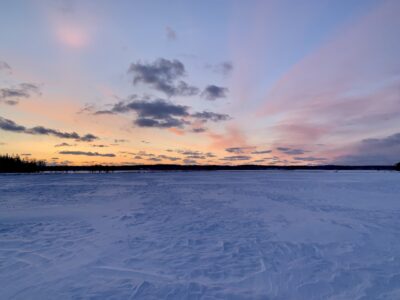
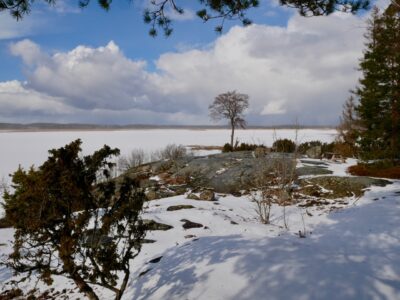
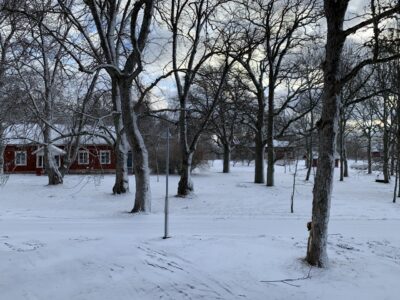
The ice vanished during that intense period of warming, within a few days. At the same time, flowers erupted and more animals appeared on the land—rabbits, herds of deer, insects, and amphibiae. These pictures were taken during the last days of my stay. If you look closely, you can see the number of birds lining the beach.
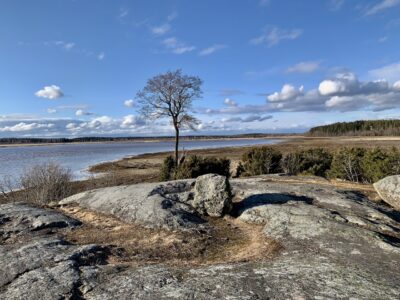
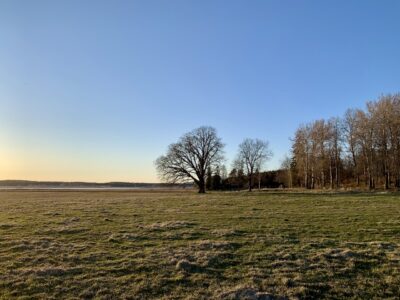
29 April 2022
Finland to Sweden
Leaving Finland, I take the night boat from Turku to Stockholm. I have time to visit Turku castle before leaving. Finnish design, medieval style.
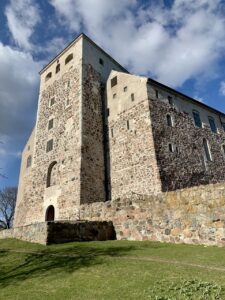
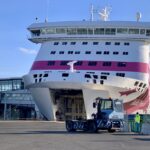
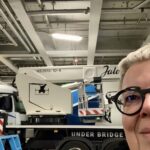
On board, the evening sky to the West now looks similar to the morning shine when I arrived. The ice is gone, now.
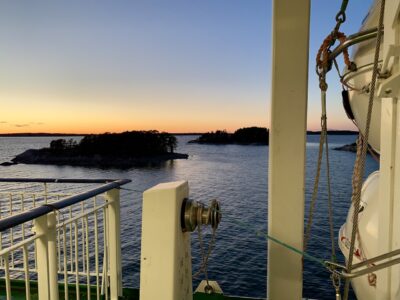
In Sweden, I stop for breakfast at a café with a small garden shop and nursery. I fall in love with a small tree, and end up buying a travel companion: an almond tree, prunus dulcis. It fits into the seat next to me. I almost feels I can talk to it, such good company. Sometimes, when I stop, I’m addressed by people who pass by and notice my Austrian license plate. People ask whether I drove the entire way by myself—such a long distance, and as a single woman? And what did you do in Finland? Nice conversations develop from there. They also notice the plant on the front seat, and comment on my travel companion: oh, you do have someone to talk to? When I stop for the night, I take the tree outside and water it. [For German speaking insiders: Ich reise mit Mandelbaum.]
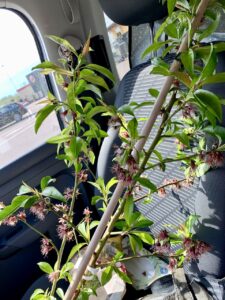
Again, I stop at the medieval Vreta cloister in Berg, Sweden. Spring has come, the fields appear green now, the water of the shallow lake below the hill (‘berg’) where the cloister stands, that had been an ice-field before, now reflects the blue sky. Less birds this time. Again, the buildings are invitingly open but empty. On the gate, I find a list of musicians who work with this church, and I call one who seems in charge of organising. I ask if I may play inside, and again I am welcomed. I set up my recording gear, and play.
Once more, I am stunned by how the low F resonates with the building. When I stomp on the floor, there is a very low F resounding, as if from cavities underneath. I remember that in March, when I came here for the first time, it was an F# instead of F. This must be due to the overall seasonal change, including soil and room temperature, humidity, and my instrument. I find it interesting; the change is clearly perceptible.
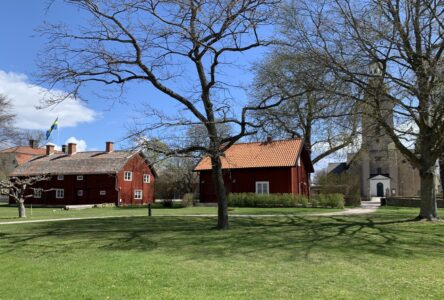
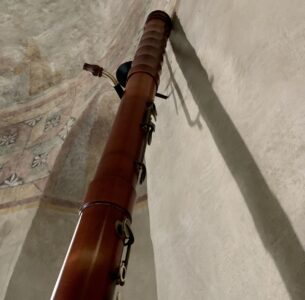
I
stay at Jönköping for the night, and stroll through posh urban quarters. Large construction sites downtown near lakeside—the ususal expensively stylish concrete/steel/with-wooden-decorations mixture, it seems. Here, too, one finds some plastic waste on the shore of the lake, mixing with dead or half-dead fish, dancing on small waves right below the feet of people walking by.
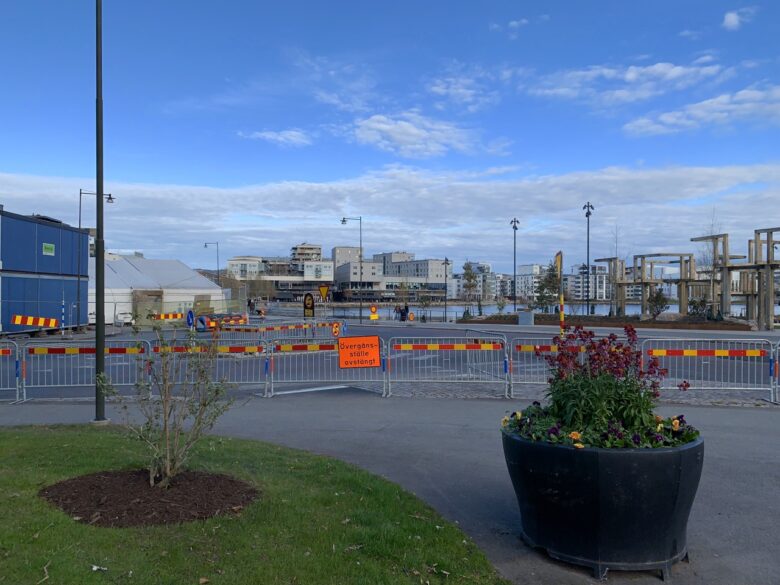
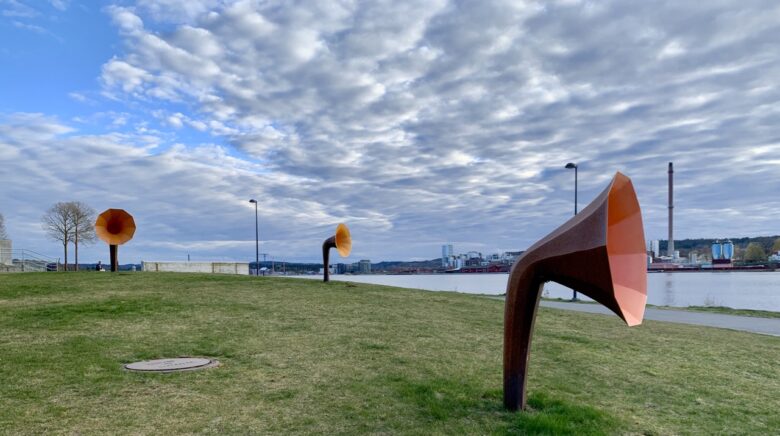
3 May 2022
Traveling through Sweden and Denmark…
Observations about garbage in landscapes, mostly along major roads.
Europe has a huge garbage problem. On the strips of land besides major roads I notice a lot of garbage, most of all plastic, smaller as well as bigger pieces. I find this in every country—a bit less in the not-so-populated areas, but it is everywhere. In the cold season, I did not see that much of it. Partly because of snow covering up everything; maybe there is more and new waste now, because more people begin to use the roads again, in spring? What are we doing here, as human beings? The waste will accumulate, it will not vanish, it will simply become more dispersed into and over the land. It is such a shame, it will be an awful lot of work to collect all this, every single piece.
Sometimes, I pick up garbage around me when I stop for a rest on the roadside. I always have plastic gloves and a garbage bag with me. In Denmark, I indeed pass two workers with a small vehicle collecting things from the middle section of a small highway.
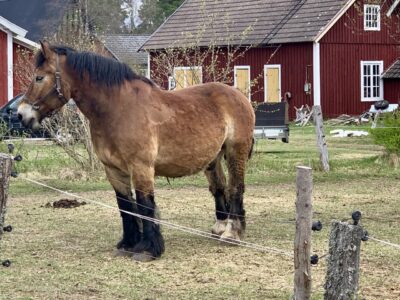
Also, I count numerous killed animals, from almost mummified larger deer on the side to completely flattened foxes in the middle of the road, their tails still flipping in the wind stirred up by the traffic as if it were alive. Mostly in Southern Sweden, Denmark and Northern Germany, where highways and larger roads often do not have fences; here, fields and forestland reach right up to the roads. Also the animals are very active at this time of the year, in the beginning of spring.
I notice killed birds, and sometimes even killed birds of prey. Birds of pray feed on roadkill, habitually, all across Europe. They can be observed sitting on guard, on poles and fences right next to the roads; at times, they get too close to the traffic. In a parking lot, I once watched a wagtail picking smashed insects from a car front. Various kinds of birds can be observed feeding on human food waste around restaurants or super markets, at parking lots.
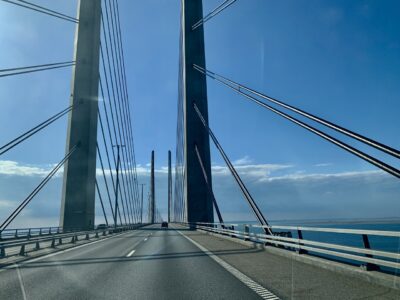
…and Germany
Passing the border into Germany, I receive an SMS from the German government, about their COVID regulations. 3G prescriptions for those entering Germany, but no controls. I ask about that at the hotel in Lübeck, I am told that nobody has to control anything.
The first German radio stations come as a relief to me: I like to listen to interesting radio programs while driving. I can now understand the dialogues! Right away, I fall into a philosophical discussion about freedom on NWR. The two program collaborators hold their discourse at a Zoo, and include visitors in their conversation. I love it. I observe the difference in how news are presented, in various radio stations in Germany and Austria. Reports and analyses of the war in the Ukraine vary.
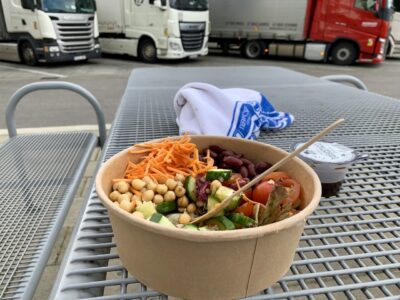
For the first time in two months, I see trucks with Austrian license plates, but still no private cars from Austria. After Scandinavian driving habits and speed limits, traveling on central highways in Germany feels strenuous to me. The atmosphere of driving and the overall traffic behaviour are becoming more stressful and demanding. Or is it because of my long stay at the Finnish country-side, away from any dense traffic, that I feel overwhelmed? Two lanes of trucks, often passing each other, and on the third lane drivers approach with 170 kmh and more. I experience the high variation in driving-speed as stressful. I wonder about society in general: how do extreme differences between individuals drive conflict and stress?
Is this a landscape or an industrial park I’m driving through?
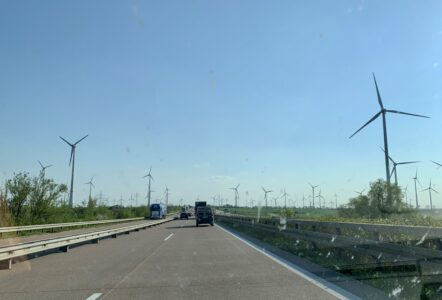
It feels very unusual to go into a shop in Lübeck and order something in my mother tongue, in German. The person I talk to is Indian by birth and fluently speaks a local German dialect. I, native Austrian, can hardly find words and stammer along. The smell of the air, of the blossoms and green trees is stunningly sweet.
4 May 2022
Traveling back home, Weimar to Vienna
I decide to stop at Weimar and stay for two nights, to rest and take a look at the city. Here in Weimar I meet the first person from Austria, since two months. Waiting in line at a street food vendor, I begin to talk about German food with a lady from Innsbruck. We shift to history, philosophy and art, and discuss how the city of Weimar has become so successful by positioning themselves as a community of culture.
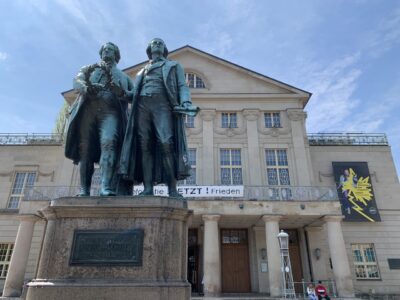
We agree that this makes a difference to visitors, like ourselves. The city becomes more attractive and, in particular, during times of unrest and crises, people enjoy the peaceful and culturally stimulating atmosphere. I like strolling through the wide parks, meeting old trees like this gingko. It is not the ‘famous’ gingko whose leaf is mentioned in one of Goethe’s poems (there is some dispute about the author, I think?). But is is almost as old, and grows next to the former house of Frau von Stein.
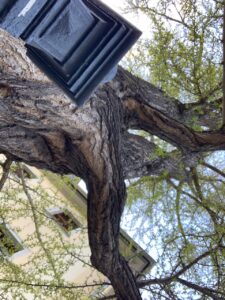
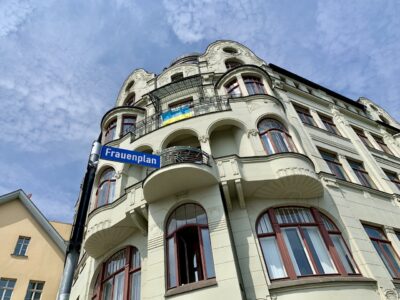
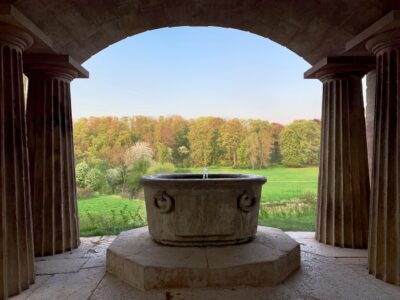
From Weimar, I drive to Vienna in one long day.
I cross the Danube river near Passau—I appreciate bridges, when the architecture is good, such as this one. My favourite is the sea-passage from Copenhagen to Malmö. It feels uplifting to cross the water along such a building. Minutes later, passing the border to Austria brings tears into my eyes, immediately followed by critique and anger about how much natural landscapes are being destroyed here in my home-country, through a building-craze and concrete-craze that seems to hold smaller towns in a tight grip. I arrive at my home in Vienna close to midnight.
